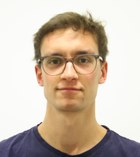Gust Nuytten
Laboratory of Pharmaceutical Process Analytical Technology
Ottergemsesteenweg 460
B-9000 Gent (Belgium)
Tel.: +32-9-264.8068
Fax: +32-9-222.82.36
E-mail: Gust.Nuytten@UGent.be
Education: Pharmacist (Master in Drug Development)
The spin freeze-drying of antibody-drug conjugates
Antibody-drug conjugates (ADCs) are a promising novel class of anti-cancer drugs. They consist of a chemotherapeutic payload, a linker and an antibody which binds to the cancer cell proteins with high specificity. In this way, ADCs specifically target cancer cells, where the chemotherapeutic payload is released and the cancer cell is consequently killed. Owing to this specificity, ADCs typically result in less side effects compared to conventional chemotherapies.
Despite promising results, all ADCs currently need to be freeze-dried to ensure their stability in storage. The LPPAT group developed a novel spin freeze-drying technology with advantages such as easy in-process measurement of product quality that makes it well suited to the freeze-drying of ADCs.
The goal of this project is to investigate the feasibility of applying spin freeze-drying to ADCs by assessing different formulation and process parameters, such as protectant formulation composition and cooling rate during freezing. Long-term stability will be investigated using a variety of analytical techniques such as cell-based assays and chromatography. The findings could result in a more efficient freeze-drying process for the storage of antibody-drug conjugates.